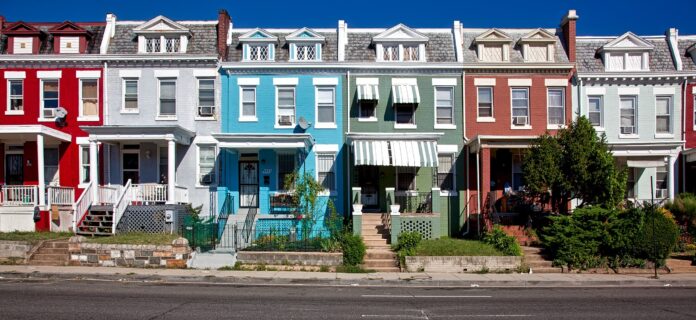
By Stacy M. Brown, NNPA Newswire Senior National Correspondent
A recent study conducted by the Chamber of Commerce, a product research company specializing in real estate, revealed that more than 25% of homeowners in the United States are burdened by housing costs, spending over 30% of their income on their homes.
The study utilized data from the U.S. Census Bureau, analyzing monthly housing costs and median household income in the 170 most populated cities nationwide.
The findings indicate that 27.4% of all homeowners are considered “cost-burdened.”
Miami, Los Angeles, and New York City are leading the list of cities with a significant number of financially strained homeowners, where more than four in 10 feel stretched beyond their means due to housing expenses. Interestingly, all but one of the top 10 cities for cost-burdened homeowners are in California or Florida.
In the District of Columbia, 26.3% of homeowners also grapple with the weight of housing costs.
The rise in mortgage interest rates is one factor that contributes to the financial strain homeowners experience.
At the pandemic’s beginning, rates hit historic lows but surged past 7% in 2022, reaching the highest levels since 2002.
While rates have cooled slightly since early 2023, new homeowners still face significantly higher monthly mortgage payments compared to those who locked in lower rates.
Combined with skyrocketing inflation and stagnant wages, Americans now owe trillions more than before the pandemic.
The higher housing costs are eating into savings, spending, and emergency funds.
The impact of rising housing costs is not limited to homeowners alone. Renters also bear the brunt of this trend, as escalating housing expenses increase rental rates.
It means that renters and homeowners feel financially strapped by growing housing costs.
The study sheds light on the long-standing personal finance guideline known as the “30 percent” rule.
This rule advises individuals to ensure that their housing expenses, including rent or mortgage payments, property taxes, and utilities, do not exceed 30% of their monthly income.
However, with the current housing affordability challenges, many individuals need help to abide by this rule.
The study also reveals a concerning trend.
From 2015 to 2019, the percentage of financially burdened homeowners in the United States decreased annually, dropping from 29.4% in 2015 to 26.5% in 2019.
However, the pandemic has begun to reverse these gains, with cities like Los Angeles and New York experiencing an upward trend in cash-strapped homeowners.
In Los Angeles, almost half of homeowners are considered “house poor,” despite a four-percentage-point decrease between 2015 and 2019.
Similarly, in New York City, the percentage of house-poor homeowners increased to over 45% in 2021, up from 41.3% in 2019.
On the other hand, Miami bucked the trend, as the percentage of house-poor homeowners dropped by two and a half points to 44.6% in 2021.
The Federal Reserve, faced with the uphill battle of fighting inflation, has raised interest rates monthly since March 2022.
Although the Fed does not directly set mortgage rates, its actions often influence home loan rates.
However, there is now a glimmer of hope on the horizon as the central bank signals a potential break from the consecutive rate increases that have taken place over the past year.
As the housing affordability crisis deepens, policymakers and stakeholders must address the mounting challenges homeowners and renters face.
“It is imperative to find sustainable solutions that alleviate the burden of housing costs and promote financial stability for all Americans,” said District of Columbia Realtor Piper Alford.
“It’s never ideal to spend more than 30 percent of your income on housing,” Alford insisted. “But today’s market, prices, inflation, and greed has caused many to find basic living unaffordable.”


